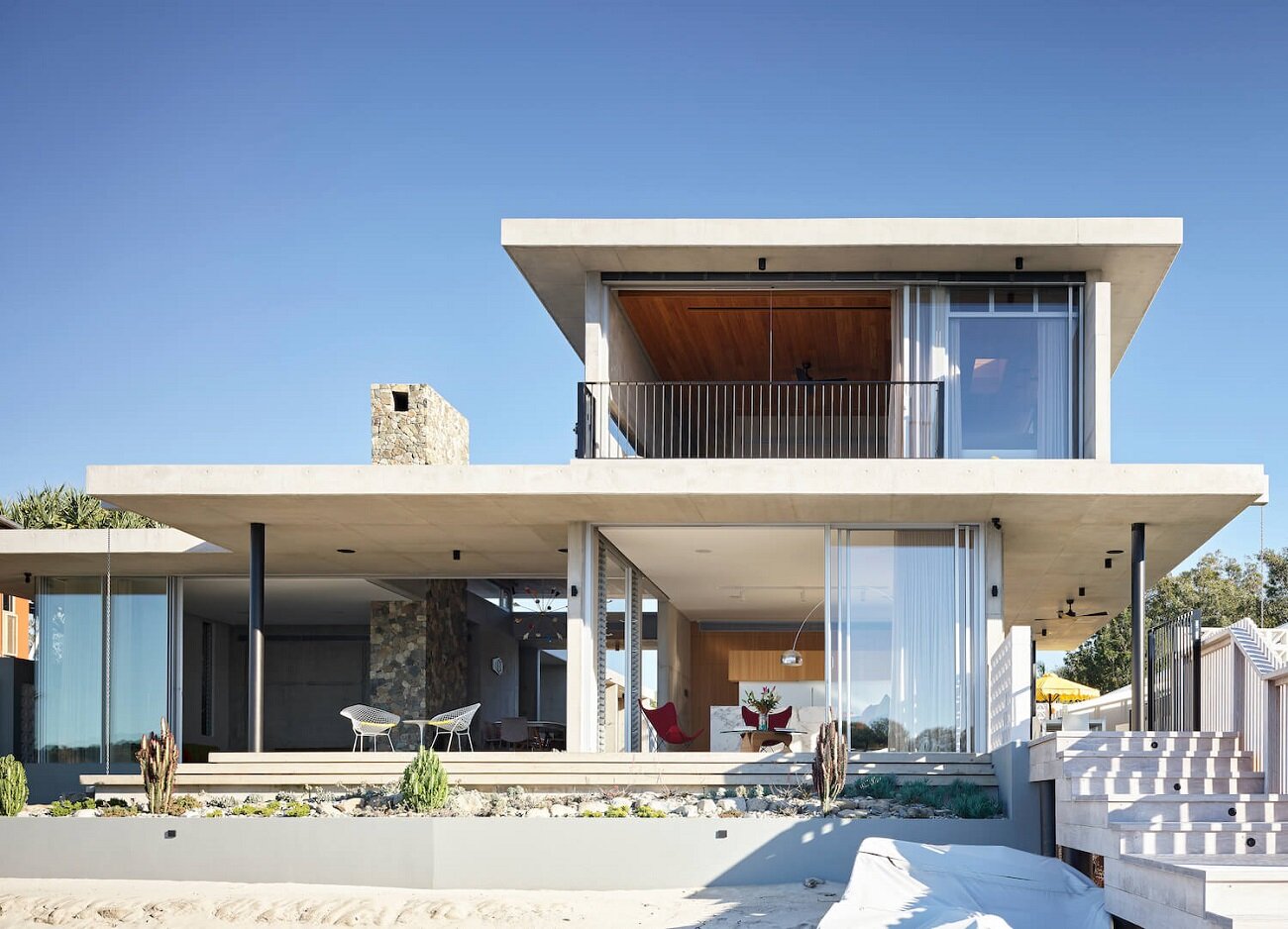#17104. Contemporary Minimalist Facade with Contrasting Materials: Concrete and Glass Coastal House

The image showcases an excellent example of contemporary coastal architecture with a minimalist facade design that emphasizes interaction with the surrounding environment. This two-story house is characterized by clean geometric lines and pronounced horizontal elements - wide flat cornices that create a strong visual accent while providing natural sun protection.
The building's facade masterfully combines contrasting materials: white concrete structure, full-height sliding glass panels, and warm wooden elements in the ceiling finish of the second-floor balcony. Particularly noteworthy is the stonework used both in the vertical column and in the small tower-like structure on the left, which brings textural diversity and connects the modern building with the surrounding natural landscape.
The architectural composition of the facade is built on the principle of transparency and openness: the abundance of glass blurs the boundary between internal and external space, allowing the interior to flow smoothly onto the terrace and then into the natural surroundings. The second floor extends over the first, creating a protected terrace space while simultaneously making the upper part of the house appear lighter and floating.
When designing your own facade, you can adopt techniques such as using contrasting materials (concrete, glass, wood, stone), creating overhanging elements to form shade and protected spaces, and integrating large glass surfaces to connect with the environment. The thoughtfully designed steps on the right emphasize the integrity of the design and provide an organic conjunction between different levels of the site.